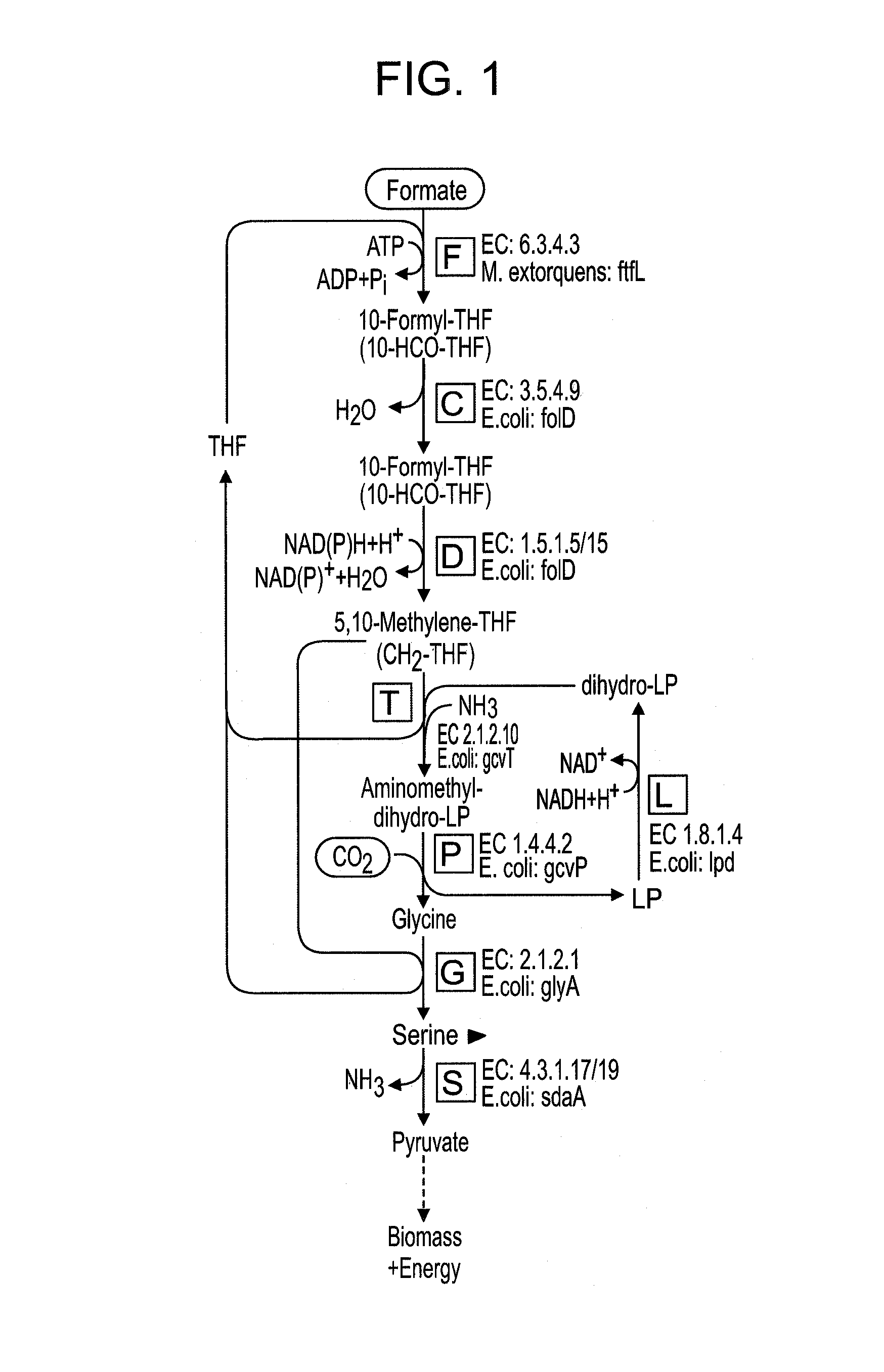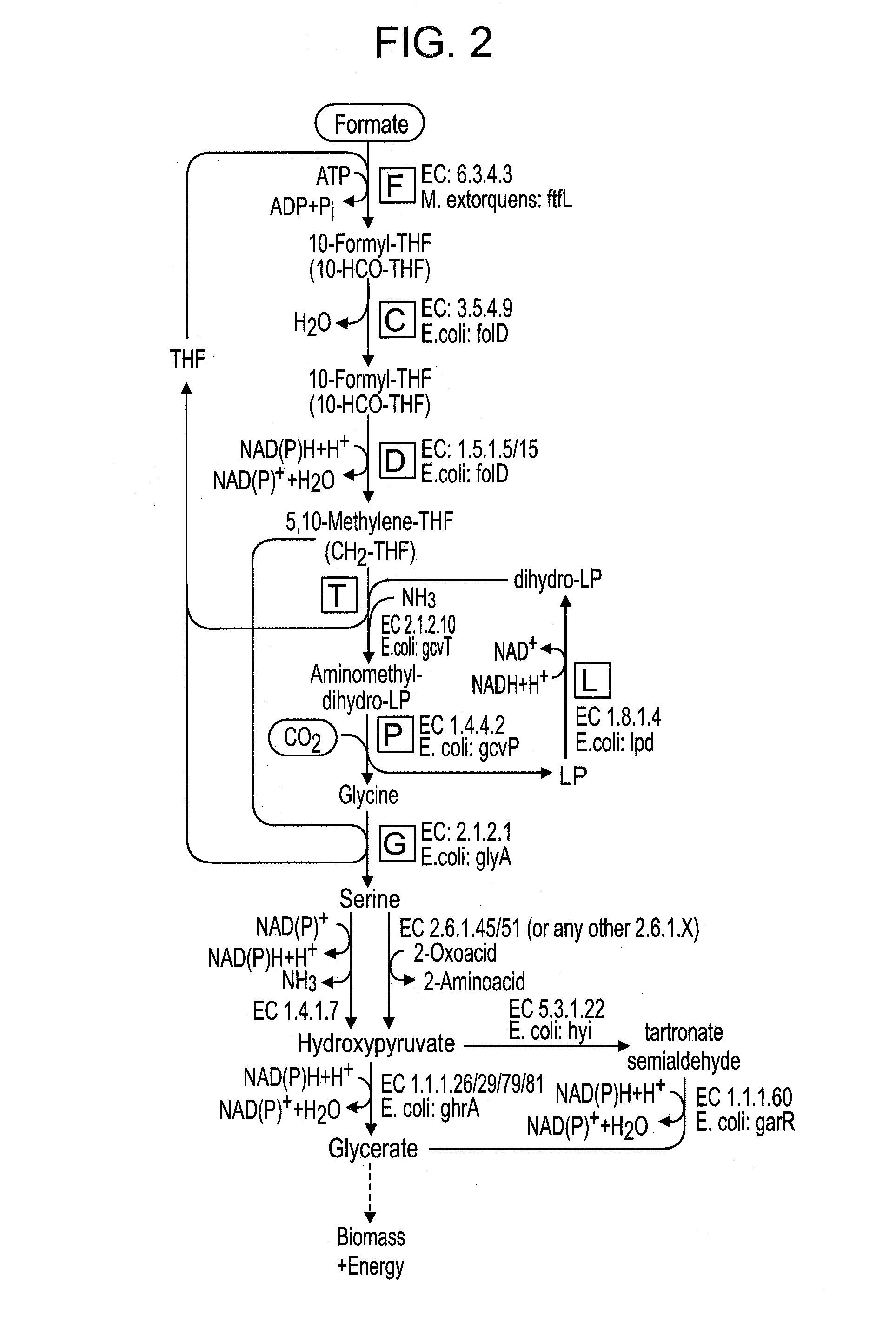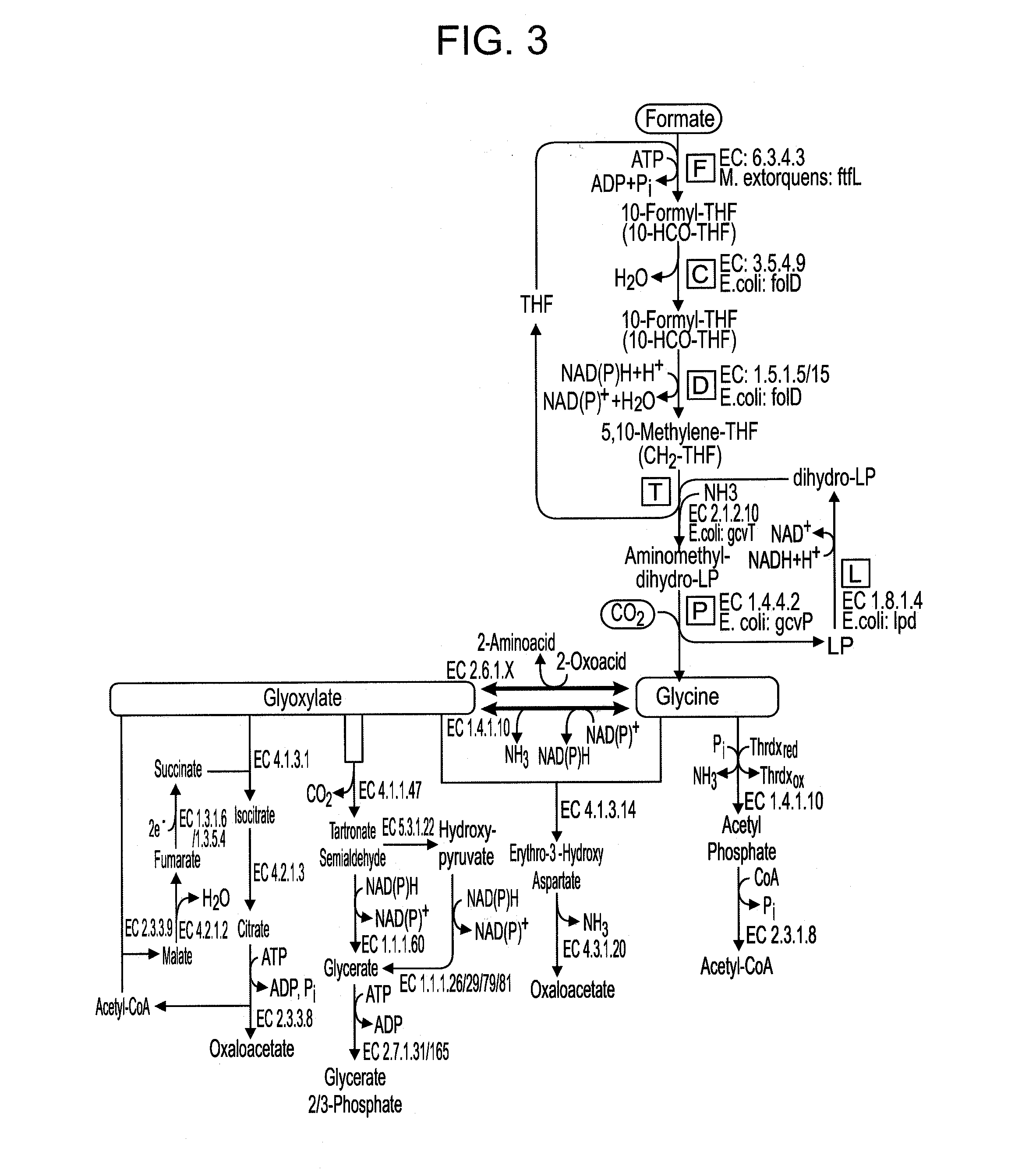Use of the reductive glycine pathway for generating formatotrophic and autotrophic microorganisms
a technology of formatotrophic and autotrophic microorganisms, which is applied in the direction of ligases, enzymology, biomass after-treatment, etc., can solve the problems of difficult storage difficult to store the feedstock in a convenient way, and the availability of fermentation technology and feedstock transportation
- Summary
- Abstract
- Description
- Claims
- Application Information
AI Technical Summary
Benefits of technology
Problems solved by technology
Method used
Image
Examples
example 1
Selecting an Optimum Pathway to Support Growth on Formate
[0164]To choose which of the pathways described above is most suitable to support growth on formate they were compared according to several criteria (28). First, the expected biomass yield on formate was calculated for each of the different pathway (21, 29, 30).
[0165]Two quantitative methods were used to estimate the biomass yield on formate of each of the pathways. In the “carbon-source-conversion” method (21), the present inventors first calculated the yield of converting formate into a designated benchmark metabolite, Yformate->metabolite, in units of mol / mol. Taking the experimentally measured biomass yield on that metabolite, Ymetabolite->biomass, in units of gCDW / mol (CDW being cellular dry weight), one can then estimate the biomass yield on formate, in units of gCDW / mol formate, as Yformate->biomass=Yformate->metabolite+Ymetabolite->biomass.
[0166]For example, the present inventors calculated the number of...
example 2
Thermodynamic Favorability
[0170]Not all metabolic pathways which operate in one organism are thermodynamically favorable in others, in which the cellular conditions (pH, ionic strength, etc.) might differ considerably (28, 36, 37). The present inventors therefore checked whether all the pathways discussed above are thermodynamically favorable within E. coli (pH˜7.5, I˜0.2 M). They tested not only the favorability of the pathway net reaction (28, 38) but also analyzed distributed thermodynamic bottlenecks composed of a subset of reactions within the pathways (28, 39). Notably, the CO-dehydrogenase-acetyl-CoA-synthase and the glycine-cleavage-system are complexes of several enzymes. Hence, the reactions that occur within these complexes are probably coupled to each other, overcoming any internal thermodynamic bather (37). For pathways that contain these complexes both scenarios were considered—internal reactions within the complex are coupled or are uncoupled.
[0171]Two pathways were f...
example 3
Chemical Motive Force
[0174]Being thermodynamically favorable is not enough. The energy dissipated during a reaction (ΔrG′) can have a substantial effect on its kinetics. In fact, ΔGr′ dictates what fraction of the enzymatic machinery catalyzes the forward reaction (38, 44-46): ΔGr′=−RTln(J+ / J−), where J+ is the forward flux, J− is the backward flux, R is the gas constant and T is the temperature in Kelvin. Hence, a low (negative) ΔGr′ value, corresponding to a high chemical motive force, indicates that most of the enzymatic machinery is catalyzing the forward reaction and hence a high metabolic rate can be achieved. Assuming substrate saturation and similar kinetics in the forward and backward direction, ΔGr′ of −7.5 kJ / mol corresponds to a reaction that proceeds at 90% of its maximal velocity: 95% of the enzymes catalyze the forward reaction while 5% catalyze the backward reaction.
[0175]The present inventors asked which of the pathways analyzed can, in principle, support high flux ...
PUM
| Property | Measurement | Unit |
|---|---|---|
| time | aaaaa | aaaaa |
| time | aaaaa | aaaaa |
| time | aaaaa | aaaaa |
Abstract
Description
Claims
Application Information
 Login to View More
Login to View More - R&D
- Intellectual Property
- Life Sciences
- Materials
- Tech Scout
- Unparalleled Data Quality
- Higher Quality Content
- 60% Fewer Hallucinations
Browse by: Latest US Patents, China's latest patents, Technical Efficacy Thesaurus, Application Domain, Technology Topic, Popular Technical Reports.
© 2025 PatSnap. All rights reserved.Legal|Privacy policy|Modern Slavery Act Transparency Statement|Sitemap|About US| Contact US: help@patsnap.com



